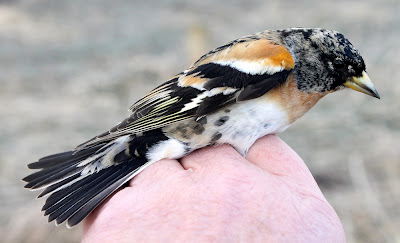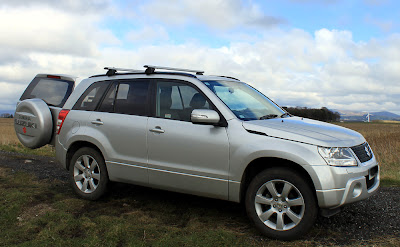Yes this is it folks, and if you reached here today via Princeton University Press Blog or Birdfreak.com you will know what this is all about. For regular readers of Another Bird Blog today’s post is a little different in the form of a whistle-stop on a transatlantic blog circuit organised by Princeton University Press, a tour of Internet birding and featuring Richard Crossley’s new book The Crossley ID Guide:Raptors.
Readers will remember Richard’s Crossley’s innovative and highly successful book The Crossley Guide:Eastern Birds, reviewed here on 27th January 2011. The post became the most visited page on Another Bird Blog with more than 1200 hits to date. The book became a huge success and Richard is now following it up by joining forces with Brian Sullivan and Jerry Liguori to co-author this new volume which takes a detailed look at North American raptors.
As part of Another Bird Blog’s contribution to this circuit and further down the page there is a draw whereby two lucky people will each receive a copy of The Crossley ID Guide:Raptors. All you have to do to be in with a chance is answer a simple question. So read on but don’t skip the middle bits which may give a clue as to the answer to my question.
This new book may be produced in the US but let’s not forget the UK and the US share not only chunks of our history and culture but also a number of birds of prey and occasional transatlantic passerine and wader vagrants. There’s a healthy interchange of bird watchers too, with US birders heading to Europe as well as many UK birders visiting US raptor watching stations and bird observatories or taking birding holidays.
I looked through the The Crossley ID Guide: Raptors to find the species common to both nations, the familiar birds which UK birders might see over in the US, and the regular species a US birder might well see in the UK. We share species, but we often like to name them slightly differently, a whimsy of our respective ornithological systems, so I will list the species and include both name versions where appropriate, US version first followed by the UK name and then finishing with the Latin name:
- Merlin Falco columbarius
- Northern Harrier/Hen Harrier Circus cyaneus
- Rough-legged Hawk/Rough-legged Buzzard Buteo lagopus
- Peregrine Falcon Falco peregrinus
- Gyr Falcon Falco rusticolus
- Northern Goshawk Accipiter gentilis
- Osprey Pandion haliaetus
- Golden Eagle Aquila chrysatos
There may be several thousand miles of ocean separating the US and the UK, but there are subtle variations as well as the obvious similarities, with just a few of those detailed below.
In the tiny landmass of the UK our Merlin is the singular species of Falco columbarius. In the vast continent of the US with its huge variety of habitats the Merlin has evolved into three sub-species differentiated mainly by the darkness of their plumage. There is a dark form, the so called “black” Merlin of the Pacific Northwest, a pale “prairie” Merlin of the northern Great Plains, and the intermediate “taiga” Merlin of open forest. It’s the latter type which is equal to our familiar UK Merlin.
Following a number of variable plumages seen in the UK autumn time, there’s been discussion here about the possibility of Northern Harrier/Hen Harrier Circus cyaneus being two species, a North American one and a slighly different European/UK type. The jury, in this case the International Ornithological Committee, examined the evidence and decided not to split as the genetic differences between the two are very low in comparison to many other Eurasia/North America disjunctions.

Happily both of our Peregrine populations are in a healthier state since the ban on DDT of the early 1970s which led to a recovery in numbers. This has been supported by large-scale protection of nesting places and a reintroduction programme in the many parts of the US. In both our countries the Peregrine has reoccupied former haunts and they now breed on human artefacts in our city centres. There are three subspecies of Peregrine Falcon in the US, tundrius of the north, anatum found mainly in the Rocky Mountains, and pealei which is found in the Pacific Northwest. Peregrines introduced into the eastern and other states are of mixed races. Here in the UK our Peregrine Falcons are from the nominate (first named) race Falco peregrinus peregrinus.
Rough-legged Hawk/Rough-legged Buzzard Buteo lagopus is but a very irregular winter visitor to the British Isles, spreading here from continental Europe, generally during times of intense cold weather and/or shortage of their lemming/mammal prey. This situation rather simplifies separating out our everyday UK Common Buzzard Buteo buteo, unlike the US landmasses where 10 species of Buteo occur, all of which feature in The Crossley ID Guide:Raptors.
The Gyr Falcon is incredibly hard to see in the UK, and just like the Rough-legged Hawk the pale Arctic falcon is a very irregular visitor to the UK mainland. As Crossley has described its status in the US, “a loner with a huge territory”, an accurate portrayal for a bird which spends much of its time hunting across the northern oceans.
In the US the Northern Goshawk is a widespread but scarce breeder of forested areas. It's a status replicated over here in the UK, whereby spotting a Goshawk makes for something of a birding Red Letter Day.
Ospreys are a common sight in in many parts of the United States, whereas in the United Kingdom the species is confined mainly to Scotland with just a small number of pairs breeding in the more remote parts of Wales and northern England. In the English counties Ospreys are a regular sight on migration during both spring and autumn periods.
Last but not least on my list is the magnificent Golden Eagle, a species which in both the UK and the United States breeds only in the more remote northern forests and mountains. Here in the UK our Golden Eagles are confined to the inaccessible parts of Scotland and rarely venture south across the border into England.
And now without further ado the prize draw - at last you say. There is a small, colourful raptor featured in The Crossley ID Guide: Raptors which has occurred
in the UK on less than a handful of occasions, in fact just two accepted
records, so few that while it belongs on the Britsh List of birds as maintained by The British Ornithologist's Union's Records Committee (BOURC), I didn't include it in my summary of shared species above. The last occasion this raptor appeared in the UK as a vagrant was during the late 1970s, over 35
years ago. What is the species? Please post your answer as a
comment to this post before 27th March 2013. Two winners will be chosen at
random, and due to logisitcs, one from the US and one from the UK. The winners will announced on Another Bird Blog on 28th March and requested to send me (in
confidence) their postal address. In due course each winner will receive a
copy of The Crossley ID Guide:Raptors courtesy of Princeton University Press.
As part of this two-week blog tour raptor enthusiasts are invited to join in a live Shindig video chat event on Friday 22nd March - "Raptor ID Happy Hour" from 6pm to 7pm EST at
Shindig's Raptor Event. Two of the participants are the authors themselves, Richard Crossley and Brian Sullivan - sounds like a good place to be on a Friday evening with a glass of beer close to hand.
Next stop on today's blog circuit is a trip to Radd Icenoggle in Montana USA where
Radd's Blog is looking back at the Montana State recovery programme which rescued the
Peregrine Falcon from the verge of extinction in that region. Following on from Radd the Magnificent Frigate Bird web site will feature Barred Owl and Cooper's Hawk and there's another chance to win copies of The Crossley ID Guide:Raptors.
Finally and before you head off to Montana with Radd, don't forget to enter today's prize draw on Another Bird Blog and then come back soon to find out the winners of the fabulous prizes.





































































.jpg)












